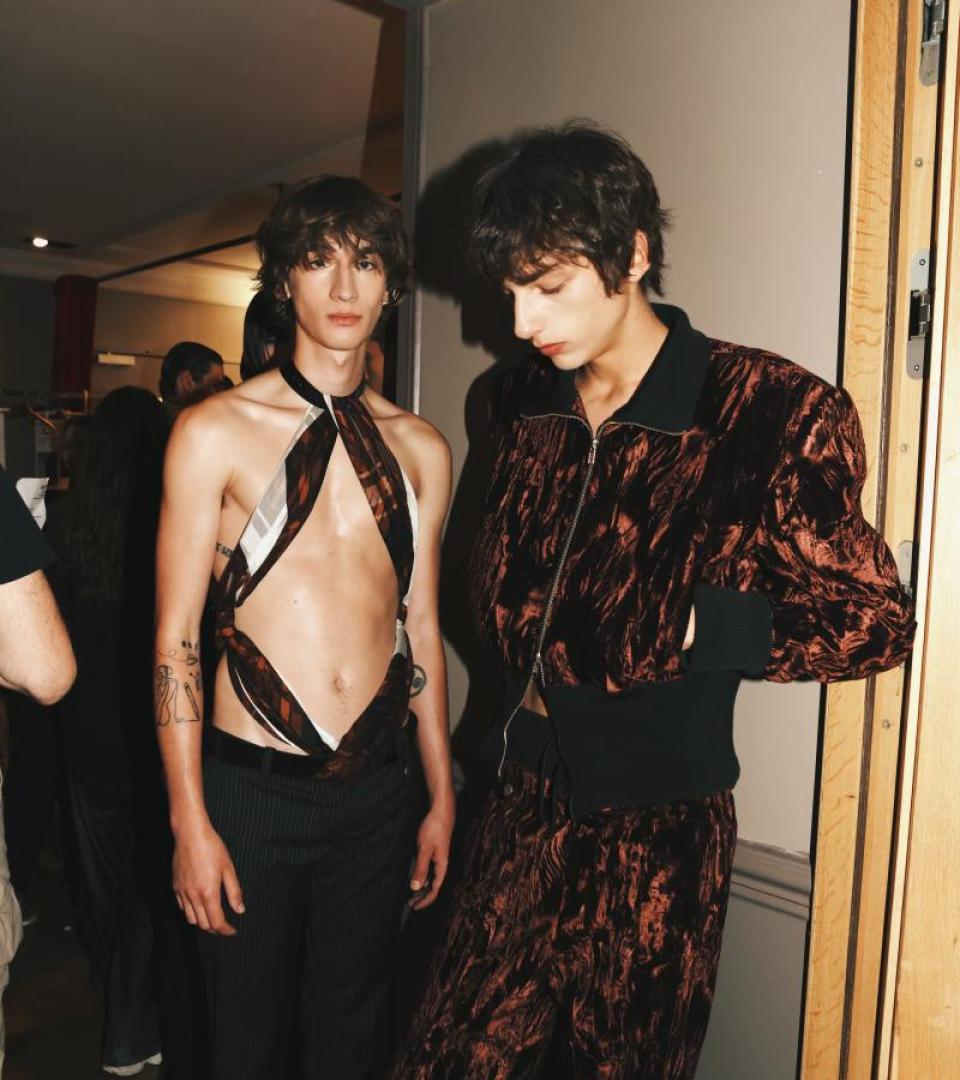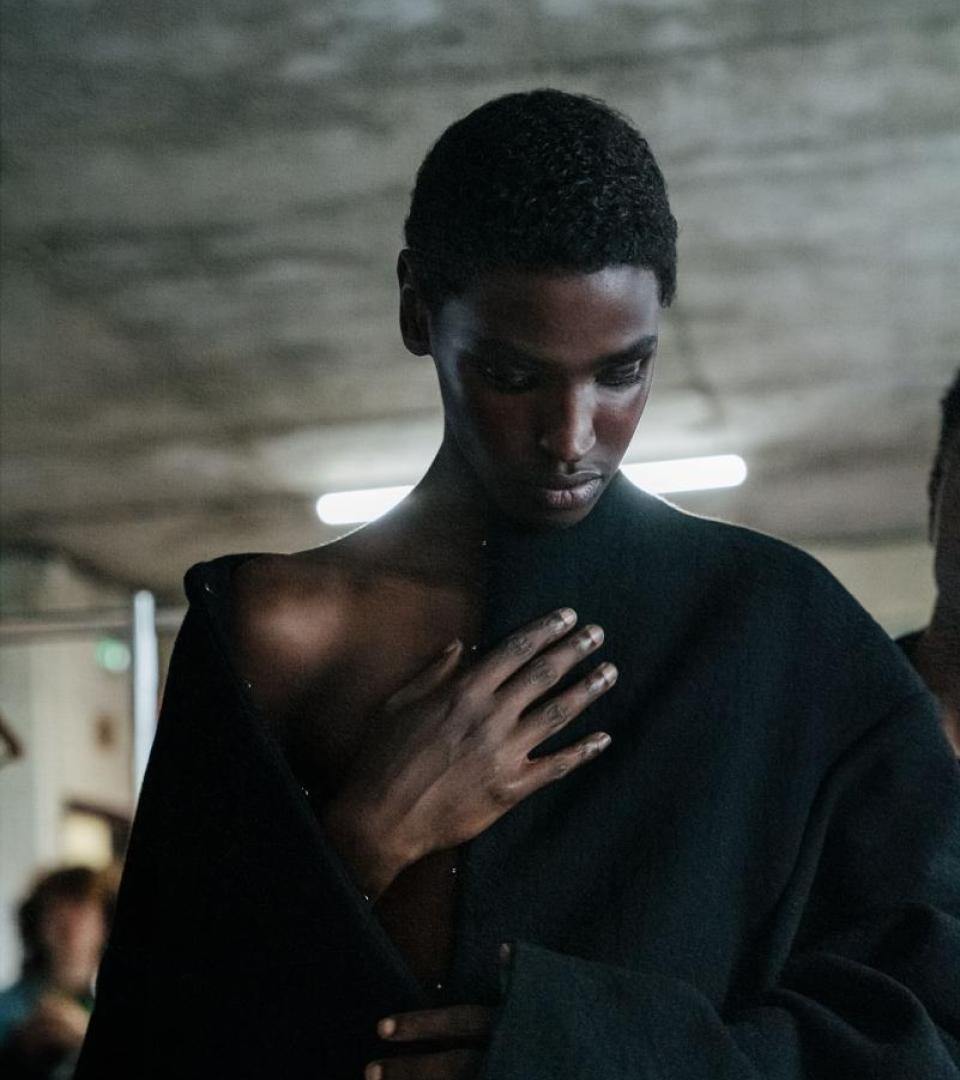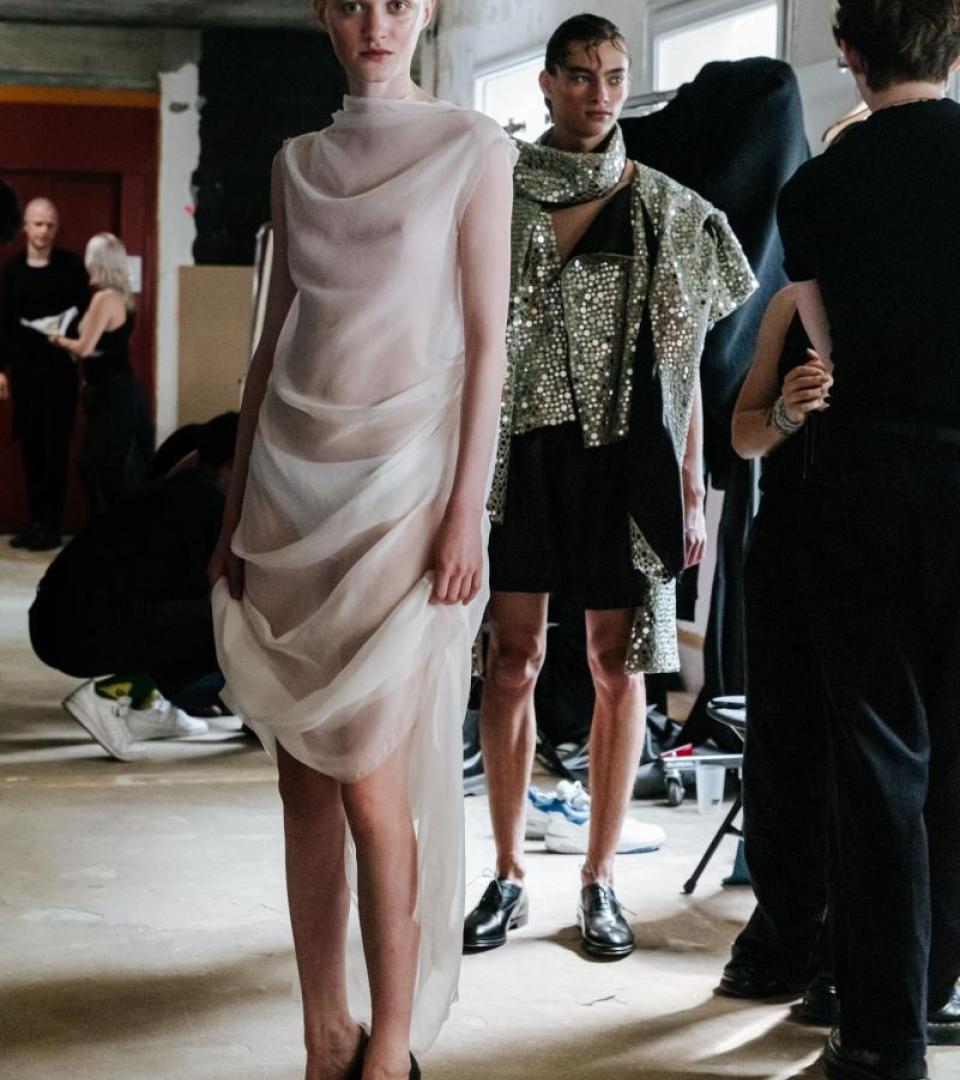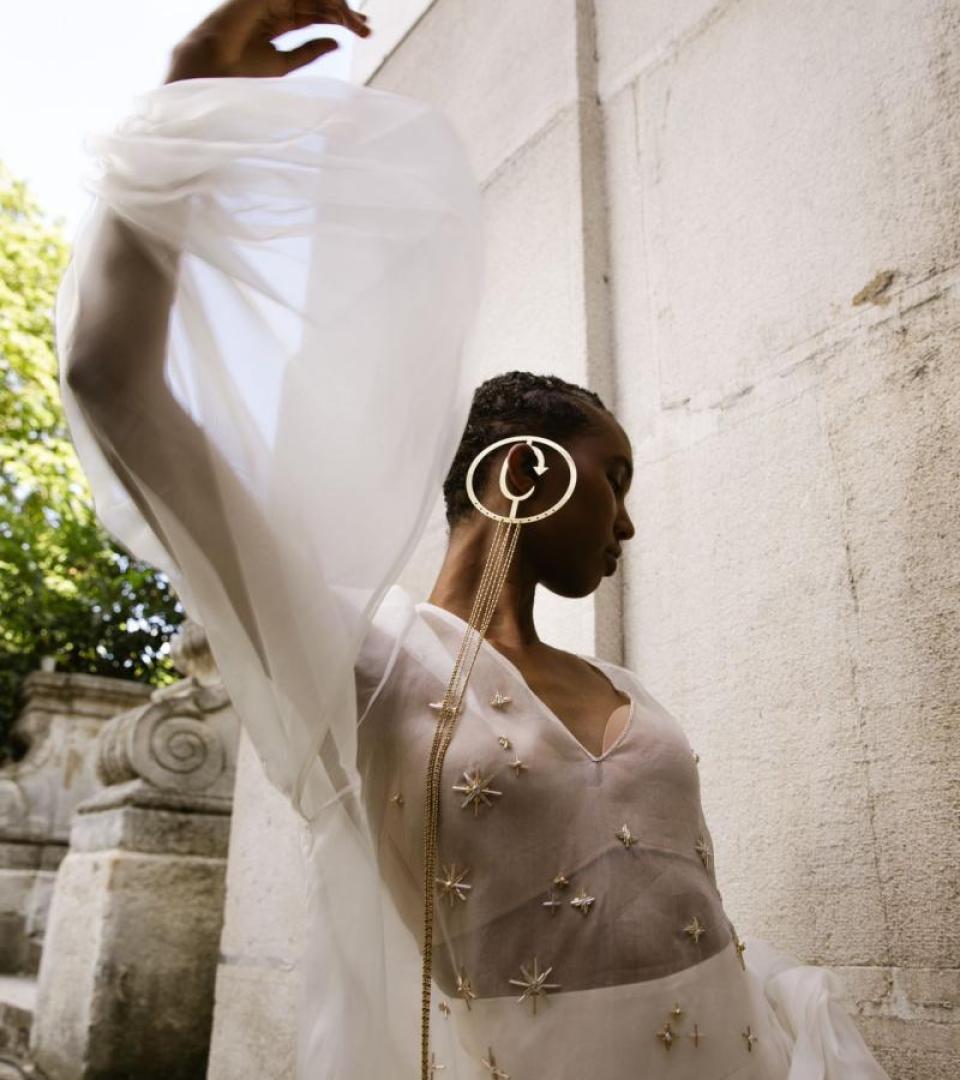Passaro combined his signature tailoring, which balances fluidity and structure, with military and BDSM influences. There were nods to military uniforms with structured tailoring, and kink with Japanese bondage motifs as the art of rope tying plays out as embroideries. Tulle shapes take animal forms and feather embroideries reference the designer’s father, a hunter, with whom he had a strained relationship. It possessed a more fantastical and dreamlike quality. Alongside his growing ready-to-wear business, Passaro is bolstering his haute couture offering. It manifests in structured tailoring embellished with intricately-beaded thorn embroideries and leather jackets.
The personal touch in the collection extends to the presentation format too. Following from last season’s immersive experience which propelled guests into the typically concealed backstage area, this season will see the petites mains cutting, sewing, stitching, and embroidering the same looks that will appear on the runway. If it isn’t obvious, Passaro doesn’t hold back when it comes to the beauty and love stories behind creation.
From his Paris studio, Passaro explained that the collection is about “the tension of secrecy in the midnight entanglement, the unspoken word, and the kiss that shouldn’t have happened.”
What would you like us to know about the new collection?
I was talking to someone on my team about how my ex-boyfriend is Scottish and we started drawing sketches with tartan poison embroideries and thorns [snaking across garments]. It had this Prince Charming from Sleeping Beauty. From there, we decided to do the entire collection about what love is and what love isn’t. There’s references to romance and it feels like a confession. There’s embroidered thorns which are beautiful but thorns are spiky – it’s not just nice, it’s sharp too. There’s some BDSM references in there with ‘shibari’ embroideries. There’s some pain with pleasure.
I’m very detached from [the stories behind the collection], but I wanted to bring them in as inspiration to show different ideas and aspects of love. If you don’t know me, you can still enjoy the collection and see it as a romantic love affair in the middle of the night in Scotland. But if you know me, you’ll see how everything is connected.
How can fashion drive growth?
People drive fashion and fashion drives people to think differently. It puts some boundaries on aspects of how we dress, how we present ourselves and our identity. If you look at what’s happening in the US with ICE targeting immigrants or how many hate crimes there are against the LGBTQ+ community; we’re supposed to be more free, but it feels like we’re going backwards. We have to continue to push ideas around these subjects to fight these things.
What surprises you about the fashion industry in 2025?
I was surprised by the recent designer musical chairs. It’s the same people being moved around. It’s time for risk. It’s time to bring new narratives and soul to brands.
What defines elegance in a contemporary context?
Elegance is having something tailored to you. It’s hard with the wholesale market when we have different bodies and proportions. Nowadays, brands are relying on hype with trashy, edgy looks, but those brands don’t last. Elegance is something that can last for at least five or 10 years. Nice cuts, nice fabrics, a nice look. It’s something that’s sensual, a bit sexy, but without being too revealing. My aesthetic is different to what’s on trend;. All I can see is a very loud visual aesthetic, but it’s too much noise for my brain. I prefer minimalism but with a little maximalism too. Ultimately, you have to have purpose for it to make sense.
Do trends still matter?
I had a teacher tell me, ‘You’re the designer; you create the trends, you don’t follow them.’ I like to build the image of the brand with each collection. Each one is an evolution of the previous one.
This interview has been lightly edited.



